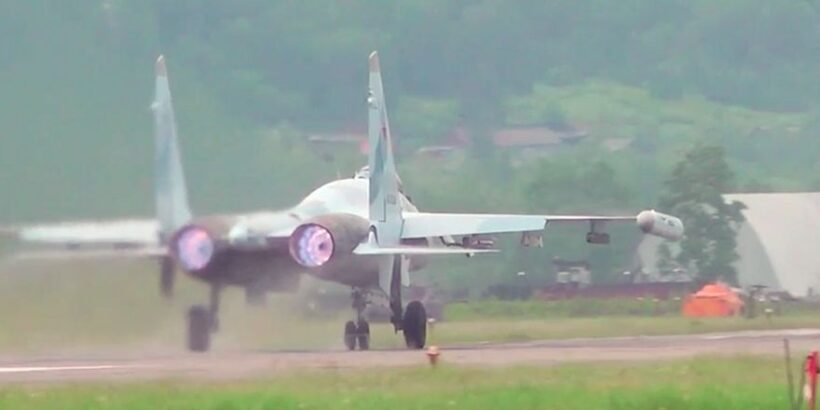The Russian Aerospace Forces (VKS) received another batch of Su-35S fighter aircraft at the Komsomolsk-on-Amur facility in Russia’s Far East. The aircraft completed comprehensive factory acceptance testing and operational checks across various flight regimes before departing for their operational bases. United Aircraft Corporation (UAC) announced the delivery through its press service.
“We arrived at the airfield to accept the aircraft, conduct familiarization flights, and ferry them to their home bases. I want to personally thank every factory worker for their contribution to our shared victory,” commented a VKS pilot involved in the aircraft acceptance process.
The pilot emphasized that the Su-35S rightfully ranks as best-in-class, enabling crews to master the most complex aerobatic maneuvers, navigation procedures, and combat operations. According to the pilot, the aircraft’s flight characteristics and superior targeting and navigation systems significantly streamline mission execution across all operational requirements.
To better understand the Su-35S’s capabilities, it is useful to compare it with some of the leading Western fighter jets.
Su-35 fighter jets are on air patrol to support attack aircraft
Comparative Context: Su-35S vs. Western Fighters
The Su-35S is often compared to several leading Western fighters, reflecting its advanced capabilities within the 4++ generation category. It rivals the latest versions of the American F-15 Eagle, matching or exceeding it in maneuverability due to its thrust-vectoring engines and advanced avionics suite. While the F-15 holds advantages in maximum speed and some radar technologies, the Su-35S boasts superior electronic warfare systems and a more diverse missile arsenal.
Against fifth-generation fighters like the F-22 Raptor, the Su-35S remains a formidable opponent despite lacking stealth technology. Its powerful radar, long-range missiles such as the R-37M, and exceptional agility enable it to engage effectively in air combat, challenging the technological edge of stealth fighters.
Compared to lighter multirole fighters like the F-16 Fighting Falcon and the Mirage 2000-5, the Su-35S offers significantly greater range, payload capacity, and combat versatility, making it a dominant force in air superiority roles.
This comparative strength underscores the Su-35S’s strategic value to the Russian Aerospace Forces amid evolving global aerial combat dynamics.
Russian Aerospace Forces Receive Another Batch of Su-35S Fighter Aircraft
This marks the third Su-35S delivery to the VKS in 2025. United Aircraft Corporation completed the first handover on March 29, followed by the second on May 12. The corporation has not disclosed the number of aircraft or tail numbers in each batch.
UAC President Vadim Badekha stressed that maintaining production rates for the Su-35S and other aviation systems remains the corporation’s top priority. The 2025 state defense order exceeds previous year’s levels, demanding enhanced organizational discipline, technological precision, and increased productivity from aerospace industry enterprises.


